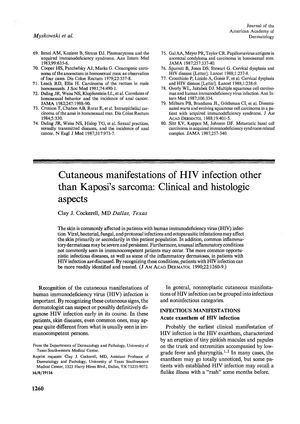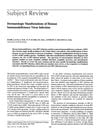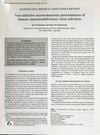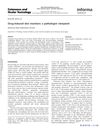Cutaneous Manifestations of HIV Infection Other Than Kaposi's Sarcoma: Clinical and Histologic Aspects
June 1990
in “
Journal of The American Academy of Dermatology
”

TLDR HIV can cause various severe or unusual skin conditions that help indicate the presence and stage of the disease.
The document from 1990 highlights the significance of identifying various skin conditions associated with HIV infection, as they can be indicative of the disease and its progression. It lists both infectious and noninfectious cutaneous manifestations that may appear differently in HIV-positive individuals. Infectious conditions include acute exanthem, herpes simplex, herpes zoster, and others, which may be more severe or atypical and require modified treatments. Noninfectious manifestations such as Norwegian scabies, eosinophilic pustular folliculitis, and severe seborrheic dermatitis are also described. Alopecia in HIV patients is noted to be "downy," with two histologic patterns: one resembling telogen effluvium and another with a dense inflammatory infiltrate. The document underscores the necessity for healthcare providers to recognize these skin conditions to provide timely and appropriate care for those with HIV.





